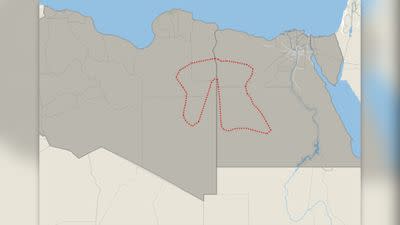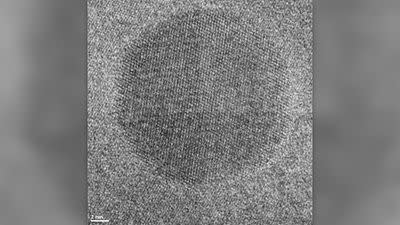The Great Sand Sea Desert stretches over an area of 72,000 square kilometers, connecting Egypt and Libya. If you find yourself in a certain part of the desert in southeastern Libya and southwestern Egypt, you will see shards of yellow glass scattered across the sandy landscape.
It was first described in a scientific article in 1933 and is known as Libyan desert glass. Mineral collectors value it for its beauty, rarity and mystery. There is a piece of glass inside the necklace found in the tomb of Egyptian pharaoh Tutankhamun. Natural glasses are also found in other parts of the world; examples include molds from the Ries crater in Europe and tektites from the Ivory Coast. However, none of them are as rich in silica as the Libyan desert glasses, nor are they found in such large masses and quantities.
The origin of glass has been a subject of debate among scientists for almost a century. Some have suggested that this could be from volcanoes on the moon. Others suggest that it is the product of a lightning strike (“fulgurites” – glass formed by a lightning strike by the fusion of sand and soil). Other theories suggest it is the result of sedimentary or hydrothermal processes; caused by a large meteor explosion in the air; or that it came from a nearby meteor crater.
We believe we now have the answer, thanks to advanced microscopy technology. Together with colleagues from universities and science centers in Germany, Egypt and Morocco, I determined that the Libyan desert glass originated from a meteorite impact on the Earth’s surface.
Relating to: Earth will be protected from a devastating asteroid impact for 1000 years (probably)
Space collisions are a primary process in the solar system due to the accretion of planets and their natural satellites through asteroids and planetary embryos (also called planetesimals) colliding with each other. These effects helped collect our planet as well.


under the microscope
In 1996, scientists determined that the glass was close to 29 million years old. A later study suggested that the source material consisted of mixed clay minerals and quartz grains coated with iron and titanium oxides.
This last finding raised further questions, as the proposed age was older than the matching source material in the relevant region of the Great Sand Sea desert. Simply put: 29 million years ago these source materials were not available in that area.
For our latest study, one of the co-authors bought two pieces of glass from a local who collected them in the Al Jaouf region in southeastern Libya.
We examined the samples with a state-of-the-art transmission electron microscope (TEM) technique, which allows us to see tiny particles of material that are 20,000 times smaller than the thickness of a sheet of paper. Using this super high magnification technique, we found tiny minerals in this glass: different types of zirconium oxide (ZrO2).
Minerals consist of chemical elements whose atoms form regular three-dimensional packaging. Imagine placing eggs or soda bottles on a supermarket shelf: Layers upon layers to ensure the most efficient storage. Similarly, atoms combine into a crystal lattice that is unique for each mineral. Minerals that have the same chemical composition but different atomic structure (different packing of atoms in the crystal lattice) are called polymorphs.
One of the ZrO2 polymorphs we observed in Libyan desert glass is called cubic zirconia; The type used synthetically instead of diamonds in some jewellery. This mineral can only form at high temperatures between 2,250 degrees Celsius and 2,700 degrees Celsius.
Another polymorph of ZrO2 that we observed was a very rare polymorph called ortho-II or OII. It occurs at very high pressure – about 130,000 atmospheres, a unit of pressure.
Such pressure and temperature conditions provided us with evidence for the origin of the glass from the meteorite impact. Because these conditions can only be achieved by a meteor impact on the earth’s crust or the explosion of an atomic bomb.


More mysteries to solve
If our finding is correct (and we believe it is), the main crater where the asteroid hit the Earth’s surface should be somewhere nearby. The closest known meteorite craters, called GP and Oasis, are 2 kilometers and 18 kilometers in diameter respectively, quite far from where the glass we tested was found. These are too distant and too small to be considered the main craters for such a large amount of impact glass, all concentrated in a single spot.
Related Stories:
— Asteroid apocalypse: How big would a space rock have to be to end human civilization?
– Experts say that the ‘meteorite’ that hit the French woman was an ordinary Earth stone
— OSIRIS-REx team finds NASA’s 1st asteroid sample rich in carbon and water
So while we’ve solved some of the mystery, more questions remain. Where is the parent crater? How big and where? Could it be eroded, deformed or covered with sand? More research will probably be needed in the form of remote sensing studies combined with geophysics.
This article was first republished on The Conversation.